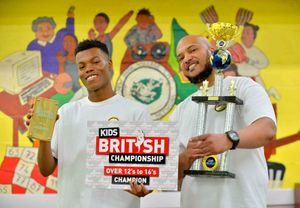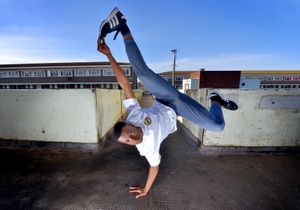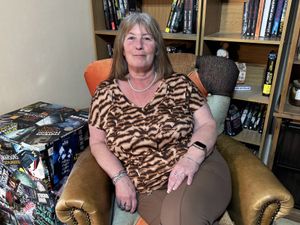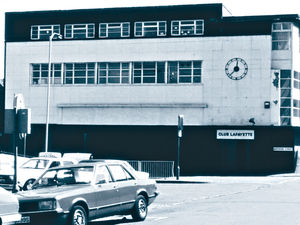Time to break Olympic tradition? Breakdancing could be included in Paris 2024 games
Aijion Brown performs his dance moves on a pedestrian ramp, with a couple of postal workers as an audience. A few years from now he hopes to be performing in the Olympics.

"I can't even talk about it, I'm so excited," says the 17-year-old from Wolverhampton's Park Village estate. "Hopefully I will be there."
Organisers of the 2024 Paris Olympics have proposed that breakdancing should be included in the games, and Aijion – better known as A J The Cypher Cat on the dancing circuit – is a serious contender. Already the holder of the British Kids 12-16 junior title, as well as a UDO World Champion, the sixth former at Heath Park School is one of the country's top performers of the dance movement.
But is it really a sport?
A J's father Pablo, who runs the MDKYG dance school on the estate, is in little doubt.
"It is a sport, the training is physically demanding, it's quite hard," he says.
"You will train about four to five times a week, it's quite physical, you need to be fit, but you need to be flexible as well.
"You work out the gym to build up your strength, but swimming is also good to build up your stamina."
A J agrees. "What makes it a sport is the competitive nature," he says, explaining how break-dancing has a league structure not unlike that for football, cricket or rugby.
"It's a bit like gymnastics, but with a competitive edge.
"If you do a battle, you take someone on, one on one. If you win you can get up to 15 points, and if you keep winning you get more and more points.

"Then the top dancers get through to the final of the competition, and then it goes to knockout.
"Say, you're number one, and I'm number eight, I can then challenge you to a battle for your place."
The proposal must now go before the International Olympic Committee, which must make a decision by December 2020.
Tony Estanguet, a three-time canoeing Olympic champion and head of the Paris 2024 organising committee, said the inclusion of the new sports would make the Olympics "more urban" and "more artistic".
It has already been included as part of the Youth Olympic Games, with Russia's Sergei Chernyshev and Japan's Ramu Kawai winning the respective boys' and girls' titles.
Breakdancing, or 'breaking' as its practitioners prefer it to be known, originated from the African-American communities during the late 1960s, but quickly spread to other groups. It reached its zenith – at least as far as the mainstream media is concerned – in the mid-1980s, when every public park seemed to be occupied by youngsters with ghetto blasters practising their moves on a piece of lino.
It was around this time that Pablo, who is 40, began practising his moves around the estate – "my whole family was involved," he recalls – but like many youngsters of that era he quickly moved on to other things.
"I then rediscovered it in my late 20s, and I have been teaching it now for 10 years," says the former youth worker.
His groups, based at the estate's Ellerton House and at Holy Trinity Church in Bushbury, attract about 15 dancers, although new members are welcome to join in. Disability is no bar to taking part either, with the regulars including a deaf girl who is able to sense the music through the vibrations in the floor.
Pablo says while breakdance might not enjoy the media exposure it did 30 years ago, today's scene is bigger than it has ever been.
"They might not show it on the main TV stations, but the big battles are streamed live around the world. There are specialist TV stations with millions of viewers," he says.

A J is now well acquainted with performing in front of huge crowds, and says thousands will turn out to watch the B-Side Hip-Hop Festival at Birmingham Hippodrome Theatre.
"I used to get butterflies in my stomach when I went on the stage in a big crowd," he says.
"I still get butterflies, but now it's more the adrenaline rather than the nerves."
Like his father, A J took up breaking at a very young age.
"I was about five when I started, I realised I had a talent for it when I started winning competitions," he says.
He says having a constructive interest can also play an important role in keeping youngsters on the straight and narrow.
"When I was a kid I had a lot of energy, and it was a way to use it up doing something positive rather than doing bad stuff outside," says A J.





